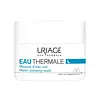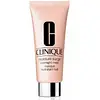What's inside
What's inside
 Key Ingredients
Key Ingredients

 Benefits
Benefits

 Concerns
Concerns

 Ingredients Side-by-side
Ingredients Side-by-side

Water
Skin ConditioningButylene Glycol
HumectantDimethicone
EmollientGlycerin
Humectant1,2-Hexanediol
Skin ConditioningSqualane
EmollientAmmonium Acryloyldimethyltaurate/Vp Copolymer
Xylitylglucoside
HumectantTrehalose
HumectantUrea
BufferingAnhydroxylitol
HumectantChlorphenesin
AntimicrobialXylitol
HumectantO-Cymen-5-Ol
AntimicrobialPentylene Glycol
Skin ConditioningSerine
MaskingParfum
MaskingSodium Hyaluronate
HumectantGlucose
HumectantAlgin
MaskingCaprylyl Glycol
EmollientDisodium Phosphate
BufferingGlyceryl Polyacrylate
Pullulan
Alcohol
AntimicrobialLeontopodium Alpinum Flower/Leaf Extract
Skin ConditioningPotassium Phosphate
BufferingCI 42090
Cosmetic ColorantCitric Acid
BufferingSodium Hydroxide
BufferingWater, Butylene Glycol, Dimethicone, Glycerin, 1,2-Hexanediol, Squalane, Ammonium Acryloyldimethyltaurate/Vp Copolymer, Xylitylglucoside, Trehalose, Urea, Anhydroxylitol, Chlorphenesin, Xylitol, O-Cymen-5-Ol, Pentylene Glycol, Serine, Parfum, Sodium Hyaluronate, Glucose, Algin, Caprylyl Glycol, Disodium Phosphate, Glyceryl Polyacrylate, Pullulan, Alcohol, Leontopodium Alpinum Flower/Leaf Extract, Potassium Phosphate, CI 42090, Citric Acid, Sodium Hydroxide
Water
Skin ConditioningGlycerin
HumectantCetyl Alcohol
EmollientDimethicone
EmollientGlyceryl Polymethacrylate
Butyrospermum Parkii Butter
Skin ConditioningCetyl Ethylhexanoate
EmollientPEG-8
HumectantGlycereth-26
HumectantSucrose
HumectantSorbitan Stearate
EmulsifyingPEG-100 Stearate
Trehalose
HumectantMangifera Indica Seed Butter
Skin ConditioningHypnea Musciformis Extract
Skin ProtectingGelidiella Acerosa Extract
Skin ProtectingOlea Europaea Fruit Extract
BleachingTriticum Vulgare Bran Extract
Skin ConditioningCladosiphon Okamuranus Extract
Skin ConditioningAstrocaryum Murumuru Seed Butter
EmollientCetearyl Alcohol
EmollientAloe Barbadensis Leaf Water
MaskingPEG-75
HumectantCaffeine
Skin ConditioningPantethine
EmollientSorbitol
HumectantButylene Glycol
HumectantOryzanol
Skin ConditioningBisabolol
MaskingPanthenol
Skin ConditioningPhytosterols
Skin ConditioningTocopheryl Acetate
AntioxidantCaprylyl Glycol
EmollientSodium Hyaluronate
HumectantHexylene Glycol
EmulsifyingCarbomer
Emulsion StabilisingPotassium Hydroxide
BufferingDextrin
AbsorbentDisodium EDTA
Phenoxyethanol
PreservativeCI 14700
Cosmetic ColorantCI 19140
Cosmetic ColorantWater, Glycerin, Cetyl Alcohol, Dimethicone, Glyceryl Polymethacrylate, Butyrospermum Parkii Butter, Cetyl Ethylhexanoate, PEG-8, Glycereth-26, Sucrose, Sorbitan Stearate, PEG-100 Stearate, Trehalose, Mangifera Indica Seed Butter, Hypnea Musciformis Extract, Gelidiella Acerosa Extract, Olea Europaea Fruit Extract, Triticum Vulgare Bran Extract, Cladosiphon Okamuranus Extract, Astrocaryum Murumuru Seed Butter, Cetearyl Alcohol, Aloe Barbadensis Leaf Water, PEG-75, Caffeine, Pantethine, Sorbitol, Butylene Glycol, Oryzanol, Bisabolol, Panthenol, Phytosterols, Tocopheryl Acetate, Caprylyl Glycol, Sodium Hyaluronate, Hexylene Glycol, Carbomer, Potassium Hydroxide, Dextrin, Disodium EDTA, Phenoxyethanol, CI 14700, CI 19140
 Reviews
Reviews

Ingredients Explained
These ingredients are found in both products.
Ingredients higher up in an ingredient list are typically present in a larger amount.
Butylene Glycol (or BG) is used within cosmetic products for a few different reasons:
Overall, Butylene Glycol is a safe and well-rounded ingredient that works well with other ingredients.
Though this ingredient works well with most skin types, some people with sensitive skin may experience a reaction such as allergic rashes, closed comedones, or itchiness.
Learn more about Butylene GlycolCaprylyl Glycol is a humectant and emollient, meaning it attracts and preserves moisture.
It is a common ingredient in many products, especially those designed to hydrate skin. The primary benefits are retaining moisture, skin softening, and promoting a healthy skin barrier.
Though Caprylyl Glycol is an alcohol derived from fatty acids, it is not the kind that can dry out skin.
This ingredient is also used as a preservative to extend the life of products. It has slight antimicrobial properties.
Learn more about Caprylyl GlycolDimethicone is a type of synthetic silicone created from natural materials such as quartz.
What it does:
Dimethicone comes in different viscosities:
Depending on the viscosity, dimethicone has different properties.
Ingredients lists don't always show which type is used, so we recommend reaching out to the brand if you have questions about the viscosity.
This ingredient is unlikely to cause irritation because it does not get absorbed into skin. However, people with silicone allergies should be careful about using this ingredient.
Note: Dimethicone may contribute to pilling. This is because it is not oil or water soluble, so pilling may occur when layered with products. When mixed with heavy oils in a formula, the outcome is also quite greasy.
Learn more about DimethiconeGlycerin is already naturally found in your skin. It helps moisturize and protect your skin.
A study from 2016 found glycerin to be more effective as a humectant than AHAs and hyaluronic acid.
As a humectant, it helps the skin stay hydrated by pulling moisture to your skin. The low molecular weight of glycerin allows it to pull moisture into the deeper layers of your skin.
Hydrated skin improves your skin barrier; Your skin barrier helps protect against irritants and bacteria.
Glycerin has also been found to have antimicrobial and antiviral properties. Due to these properties, glycerin is often used in wound and burn treatments.
In cosmetics, glycerin is usually derived from plants such as soybean or palm. However, it can also be sourced from animals, such as tallow or animal fat.
This ingredient is organic, colorless, odorless, and non-toxic.
Glycerin is the name for this ingredient in American English. British English uses Glycerol/Glycerine.
Learn more about GlycerinSodium Hyaluronate is hyaluronic acid's salt form. It is commonly derived from the sodium salt of hyaluronic acid.
Like hyaluronic acid, it is great at holding water and acts as a humectant. This makes it a great skin hydrating ingredient.
Sodium Hyaluronate is naturally occurring in our bodies and is mostly found in eye fluid and joints.
These are some other common types of Hyaluronic Acid:
Learn more about Sodium HyaluronateTrehalose is a disaccharide made of two glucose molecules (glucose is sugar!). Trehalose is used to help moisturize skin. It also has antioxidant properties.
As a humectant, trehalose helps draw moisture from the air to your skin. This helps keep your skin hydrated.
Due to its antioxidant properties, trehalose may help with signs of aging. Antioxidants help fight free-radical molecules, unstable molecules that may damage your skin.
In medicine, trehalose and hyaluronic acid are used to help treat dry eyes.
Some animals, plants, and bacteria create trehalose as a source of energy to survive freeze or lack of water.
Learn more about TrehaloseWater. It's the most common cosmetic ingredient of all. You'll usually see it at the top of ingredient lists, meaning that it makes up the largest part of the product.
So why is it so popular? Water most often acts as a solvent - this means that it helps dissolve other ingredients into the formulation.
You'll also recognize water as that liquid we all need to stay alive. If you see this, drink a glass of water. Stay hydrated!
Learn more about Water